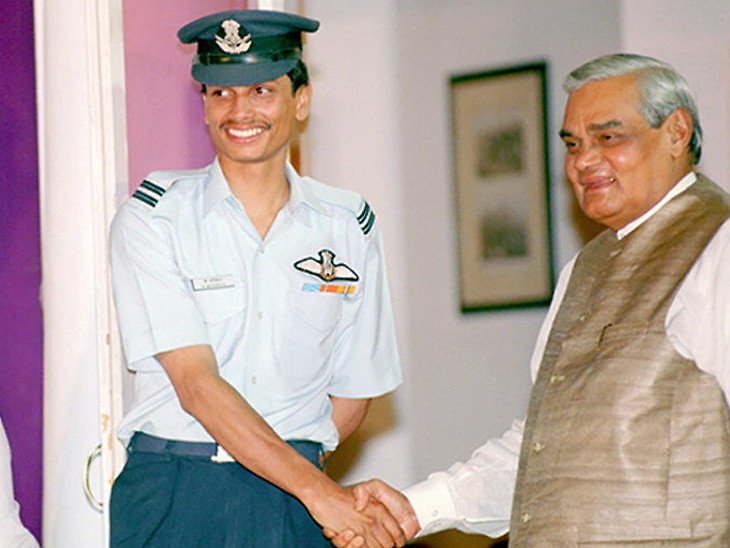The current scenario, following the Pulwama attack, has rendered the situation vulnerable and prone to aggravation. The trajectory of current events reminds one of the Kargil war hero, Kambampati Nachiketa, who was captured by Pakistan Army in 1999.
On May 27, 1999, Flight Lieutenant, (now Group Captain) K. Nachiketa was piloting a MiG-27 aircraft. According to Economic Times, after the first round of attack on a ground-based target, he came back for a second attack in the Batalic sector during the Kargil War.

Then 26-year-old Nachiketa was captured after the aircraft’s engine suffered a flame-out mid-air, according to NDTV. His aircraft was hit by an American ‘Stinger’ surface-to-air missile, according to Economic Times. This was a nightmare for any pilot, made more critical by being on the enemy grounds. He began re-starting the engine. For a second there, he saw hope as the engine began to ‘re-light‘. But alas, the aircraft was soon to hit the mountain terrain. Nachiketa had to evacuate.
This is where his real ordeal started. After quickly getting over the ‘ejection-trauma’, as he told NDTV, he realised there were bullets being fired at him.
The terrain was all white because of snow. The first thing that woke me out of the ejection trauma were bullets being fired at my location. My next goal was to get cover.

Half an hour later, he was trapped by the Pakistani soldiers. He tried firing back at them, but the small weapon he was carrying had a range of only 25 yards, whereas they were carrying assault rifles.
We carry a small pistol for safety. I could see about five to six people trying to ambush (me) where I had taken some cover. I fired the first round. And thereafter I was trying to finish off the rounds so I deter them and they don’t come towards me… I’m sure their bullets were going around me but I wasn’t getting them, and before I could load the second magazine, they had come and captured me.
He was now captured by the soldiers of the Pakistani Northern Light Infantry. They tried to manhandle him, before a senior official came and asked them to back off, according to NDTV.

Although he returned to India eight days after his capture, but what went on during those eight days was nothing short of a nightmare. Talking to NDTV in 2016, he said,
The torture was quite bad. There comes a point where you think ‘death is simpler,’ but fortunately for me, the third degree part, which is the last part, didn’t start for me.

He was tortured privately for information. Although reason convinced him there was no way he could come back to Indian soil, hope didn’t abandon him.
Although the interrogation had started and I was aware I may not see a tomorrow back in India, that hope was always there: that I’ll be back someday. I was tortured.
While all this went on, Nachiketa had no idea about the intense backdoor efforts that were being made by the Indian government to bring him back.

Bowing to international scrutiny, Nachiketa was released on June 3, 1999. According to Economic Times, he was brought in by the officials of International Committee of the Red Cross (ICRC) to the High Commission.

Now, while he can’t return to flying fighter planes, due to an injury incurred when he ejected over Kargil, Nachiketa is still serving the Air Force. According to NDTV, he’s in Indian Air Force’s transport fleet and flies giant Il-76 transports. He says,
The heart of a pilot is always in the cockpit.

















